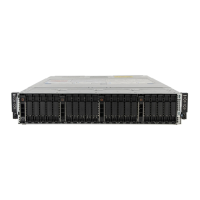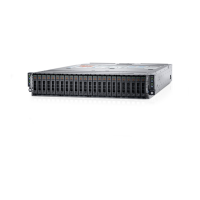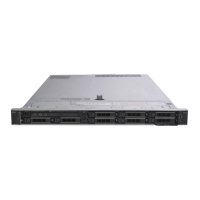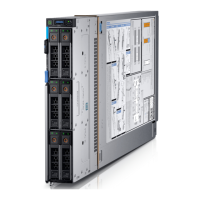Option Description
Sub NUMA Cluster Enables or disables the Sub NUMA Cluster. This option is set to EnabledDisabled by default.
Logical Processor
Idling
Enables you to improve the energy eciency of a system. It uses the operating system core parking algorithm and
parks some of the logical processors in the system which in turn allows the corresponding processor cores to
transition into a lower power idle state. This option can only be enabled if the operating system supports it. It is set
to Disabled by default.
Congurable TDP Enables you to recongure the processor Thermal Design Power (TDP) levels during POST based on the power
and thermal delivery capabilities of the system. TDP veries the maximum heat the cooling system is needed to
dissipate. This option is set to Nominal by default.
NOTE: This option is only available on certain stock keeping units (SKUs) of the processors.
X2APIC Mode Enables or disables the X2APIC mode. This option is set to Disabled by default.
Dell Controlled
Turbo
Controls the turbo engagement. Enable this option only when System Prole is set to Performance.
NOTE: Depending on the number of installed CPUs, there might be up to two processor listings.
X2APIC Mode Displays the X2APIC Mode setting that is read only and permanently set to enabled.
Number of Cores
per Processor
Controls the number of enabled cores in each processor. This option is set to All by default.
Processor Core
Speed
Species the maximum core frequency of the processor.
Processor n
NOTE: Depending on the number of CPUs, there might be up to two processors listed.
The following settings are displayed for each processor installed in the system:
Option Description
Family-Model-
Stepping
Species the family, model, and stepping of the processor as dened by Intel.
Brand Species the brand name.
Level 2 Cache Species the total L2 cache.
Level 3 Cache Species the total L3 cache.
Number of Cores Species the number of cores per processor.
SATA Settings
You can use the SATA Settings screen to view the SATA settings of SATA devices and enable SATA and PCIe NVMe RAID mode on your
system.
Viewing SATA Settings
To view the SATA Settings screen, perform the following steps:
1 Turn on, or restart your system.
2 Press F2 immediately after you see the following message:
F2 = System Setup
42
Pre-operating system management applications

